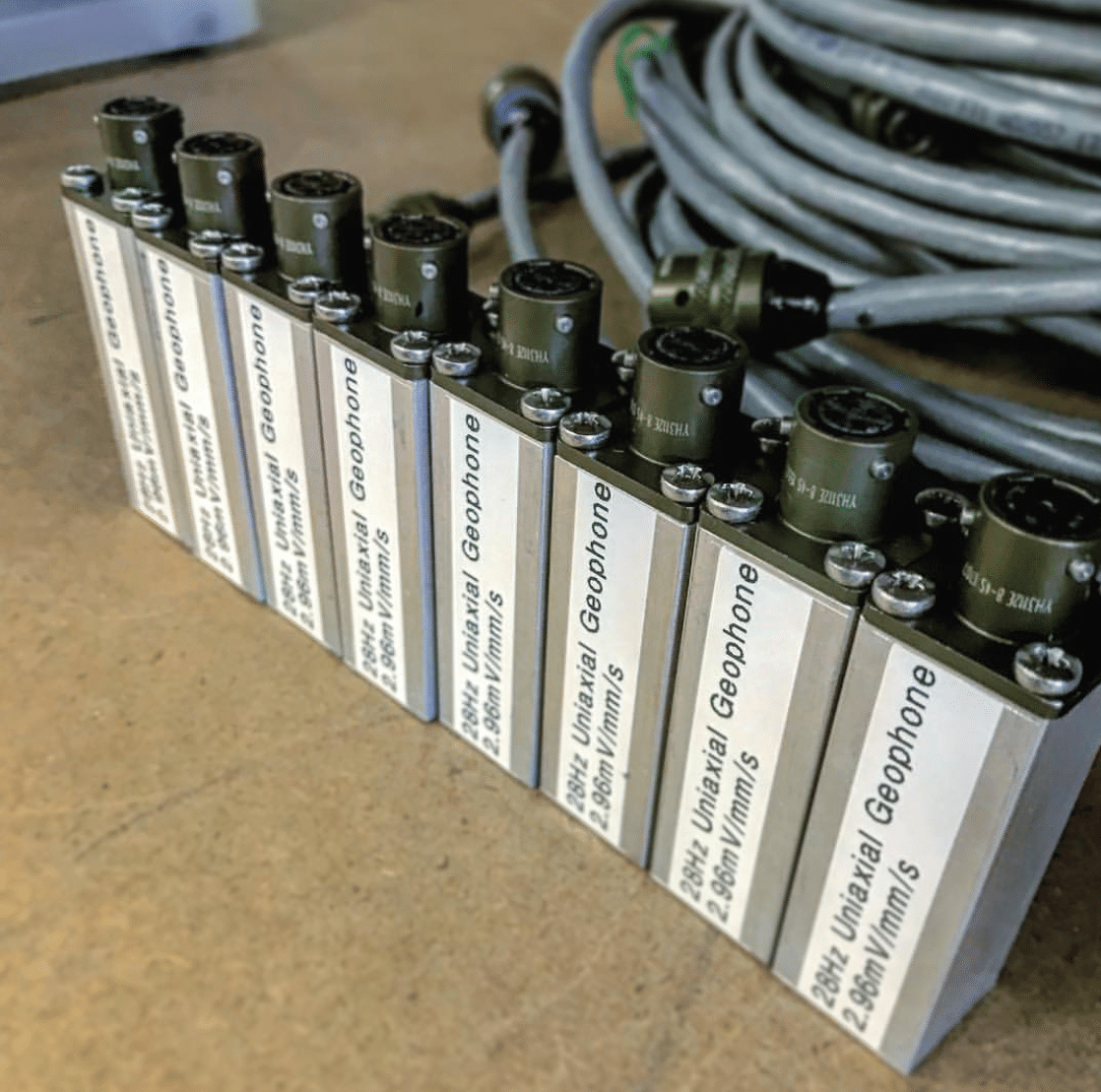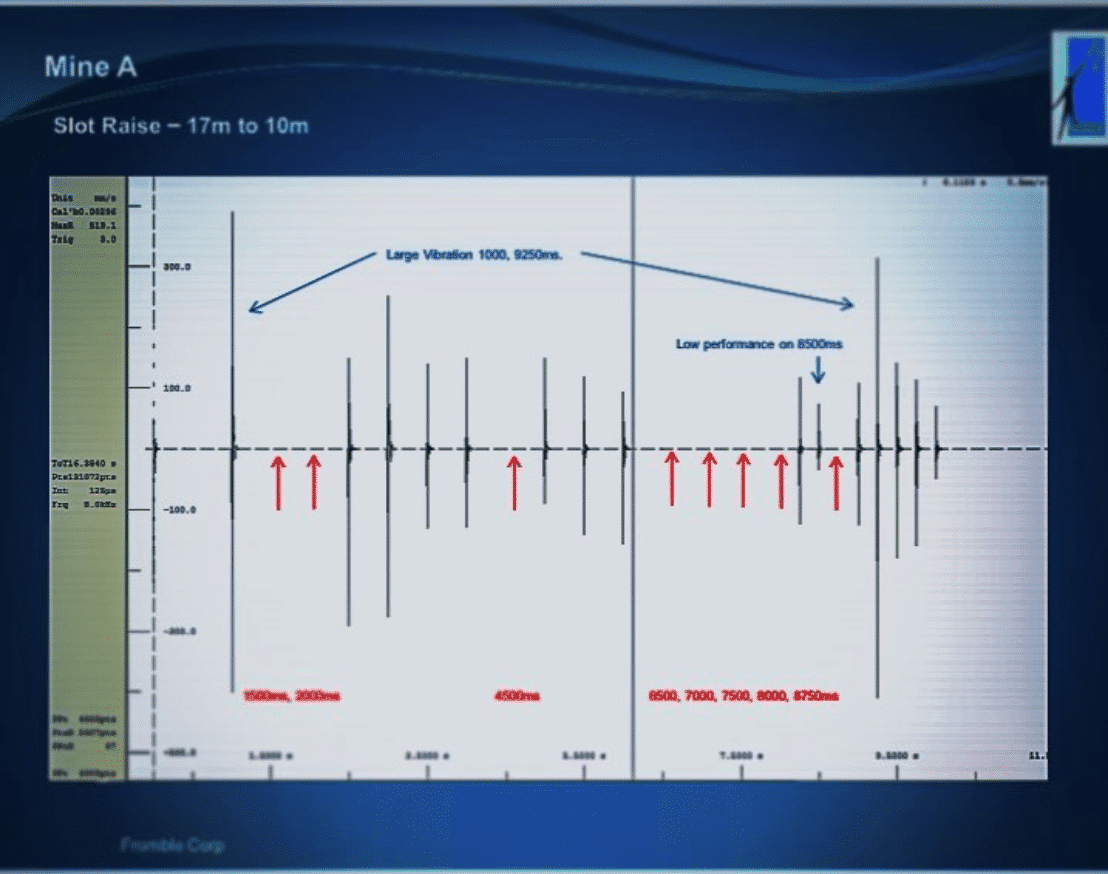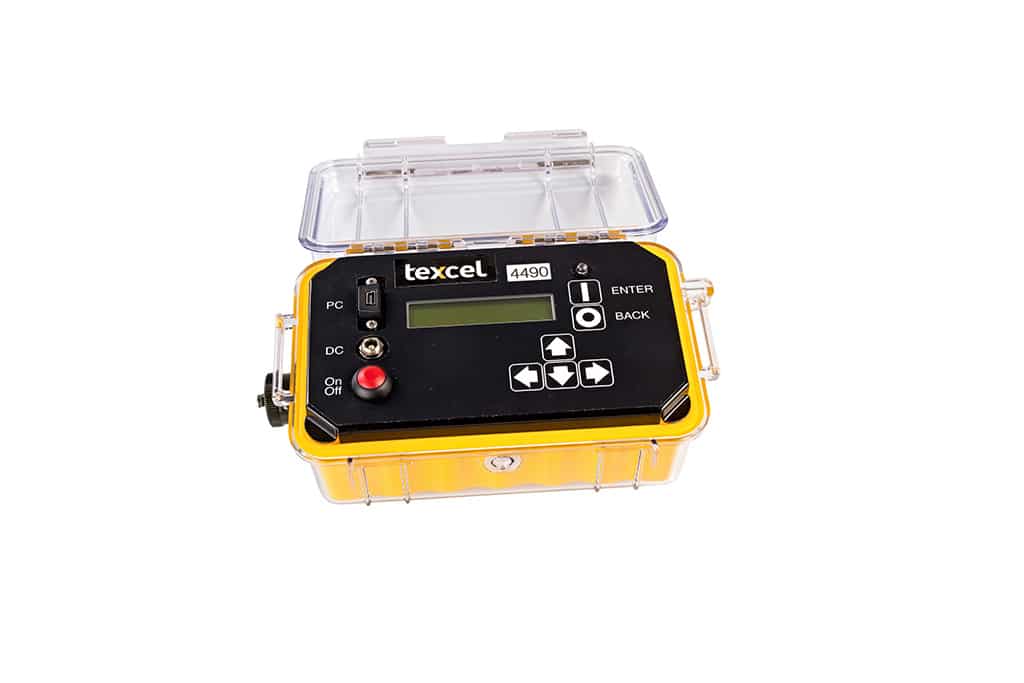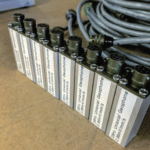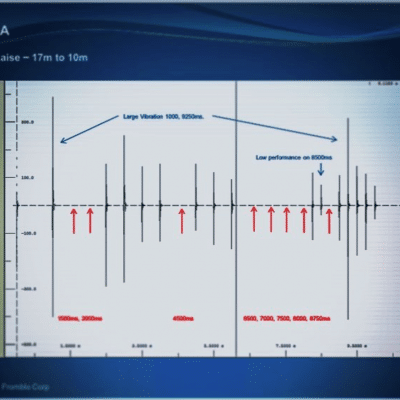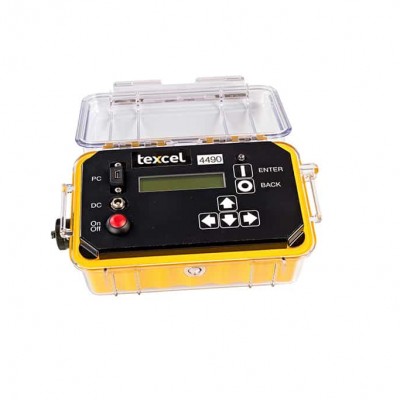Make more of your GTM monitor
Your GTM monitor can be used for much more than compliance monitoring.
Even we have to admit that compliance monitoring, important as it may be, is pretty boring stuff!
Here is an example of a much more intellectually challenging way to utilise your GTM blast/vibration monitor.
However, this is an example only. With some imagination, there are many other uses you can make of your GTM monitor.
Because your GTM is capable of sampling at up to 25,000 samples per second, it can be utilised for what we call near-field monitoring.
While you most frequently hear of this type of monitoring in underground mines, it is equally applicable in open-cut mines.
What is near-field blast monitoring and why should I undertake it?
This type of monitoring requires you to install the sensors (usually uni-axial geophones) very close to the blast – typically 10-50m away.
Up this close to the blast, the vibration signals will be of much higher frequencies than those encountered in compliance monitoring – hence the need for the monitor to sample much faster.
What sort of information can you obtain?
- Confirmation of detonation of each individual hole within a blast:
- You can achieve discrimination of around 5 ms between holes
- If you are using electronic detonation and using a minimum 10 ms gap between any holes, it is possible to see each delay
- Knowing that a detonator has fired is invaluable for blast investigation and improved safety if drilling into previously fired ground (slashing, recovery drilling, etc.)
- Understanding the amount of explosive detonating in each hole:
- The amplitude of the vibration from an individual hole can indicate how much explosive has detonated
- For example, if all holes are 20 m deep, then you would expect the amplitude of each trace to be almost the same. However, if one of the amplitudes is half of the others, you would expect that only half of the product ahs detonated. There can be many reasons for this.
- Modelling for blast design process:
- Burden timing evaluation
- Perimeter blasting impact
- Modelling for vibration limits:
- Prediction of blast-induced rock damage
- Assessing impact on other structures.
More and more mines are making it a requirement that a vibration monitor of this type be installed for each production blast in order to prove the effectiveness of the blast and to aid in investigations should blasting issues occur.
If in doubt about any of the issues discussed above or if you simply want to discuss ideas and options, please feel free to contact Texcel at any time.

